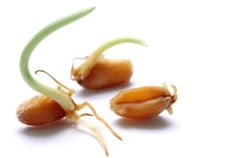SASKATOON – Agriculture Canada is imposing tough bans and controls on U.S. grain because of the karnal bunt outbreak.
Restrictions include an outright ban on all durum shipments and any potentially infected crops from four states, along with tough certification measures on other crops from other states.
“Until we can be satisfied that they have got a handle on it and they know where it is, then our position is that we have to protect the integrity of our system, our grain,” said Agriculture Canada plant disease specialist Yudi Singh.
Read Also

Canadian Food Inspection Agency red tape changes a first step: agriculture
Farm groups say they’re happy to see action on Canada’s federal regulatory red tape, but there’s still a lot of streamlining left to be done
No U.S. durum is being allowed into Canada, including shipments for export along the St. Lawrence Seaway. Nor will any of the wheat, triticale or other crops that can carry the disease from four states be able to cross the border.
And any American wheats, triticales and other susceptible crops from other states must be certified free of karnal bunt before they are let into Canada.
Durum, wheat and triticale can develop the disease, but rye, oats, barley, sorghum, millet and other crops can carry the disease spores.
Any of these carrier crops from outside of the four high-risk states of Arizona, New Mexico, Texas and California, brought into Canada for growing, must be certified.
Any brought into Canada for processing does not require special certification, but must undergo testing for other diseases, as already required.
Screenings, seed and grains for cleaning from the four infected states are banned from Canada. Cereal straws and hays from the infected states are banned, but from outside those states they are allowed to enter once certified.
Singh said American officials wanted Canada to accept U.S. government assurances the grain from certain states was clean, but Canadian officials refused.
Affect exports through seaway
The bans and controls will affect the small amounts of grain imported into Canada for domestic use, but by far the heaviest impact will be on export shipments of U.S. grain that travel through the St. Lawrence Seaway.
Last year 7.3 million tonnes of various U.S. grains were exported through the Canadian seaway.
While U.S. durum is banned outright, shipments of wheat and triticale from outside of the high-risk states will need to be tested before they are allowed to go through the St. Lawrence.
Singh said American grains exported through the seaway may not be consumed here, but they could infect Canadian export crops.
Small ships, called lakers, pick up grain from ports on both the U.S. and Canadian side of the Great Lakes. They carry the grain through to deeper portions of the seaway system, then unload into Canadian storage facilities. From there they are loaded onto ocean-going ships.
Both Canadian and U.S. grains are stored in the same facilities, and any mixing of Canadian grain with infected American grain could harm Canada’s export image.
“We don’t want contamination and to be accused of being infected,” Singh said.
“This policy will continue until we are satisfied that (they) have the situation under control.”















